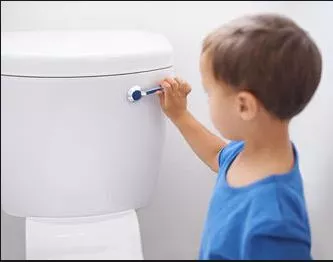Potty Training Partners

At Woodcrest Preschool our two year old teachers are your Potty Training Partner. We work with your child on a daily basis to offer praise, devleop routines and understand signals. Before your child is ready to master potty training, he or she neeeds to be both biologically and emotionally ready. Different children are ready at different ages; the timing has nothing to do with their intelligence, personality, or motivation. Here are three steps that can help your child maximize his success from Papers.com:
1. Preparation
- Get a potty chair. Many children feel more secure starting with one that sits on the floor rather than one that sits on top of the toilet. It’s less scary, and it gives them the security and balance that comes with being able to put their feet securely on the floor.
- Put the potty chair in a place that’s convenient to where your child spends most of his time. It doesn’t have to be in the bathroom; you could keep it in a corner of your playroom. Ease of access is important in the beginning.
- Let your child explore the potty chair and become familiar with it. Let him know that it’s special and it’s just for him.
2. Learning
- Have your child practice sitting on the potty with her clothes on once or twice a day. Let her get up whenever she wants. Your goal is to help her become comfortable with it.
- Praise your child for each step, even the small ones and the ones that aren’t completely successful. Stay upbeat. Remember that this is her accomplishment, not yours.
- Once she’s comfortable sitting on the potty with her clothes on, have her practice sitting on it with her clothes off. This helps her get familiar with the concept of removing her clothes before going to the bathroom. It also lets her feel what the seat is like next to her skin.
- After a few days, when your child has a bowel movement in her diaper, have her watch you dump it into the potty so that she can see where it should go. Explain to her that this is where urine and stool belong. (Children this age are also mastering the idea that certain things go in certain places.)
- Look for signs that your child needs to urinate or move her bowels. Some children will tell you in so many words. Others will grimace or grunt or get into a particular position. When that happens, ask her if she needs to go.
- Let your child see you sitting on the toilet. Let her sit on her potty chair at the same time, if it’s in the bathroom. It’s easier for boys if they first learn to urinate while sitting down. If they begin by standing up, sometimes they’ll resist sitting down to have a bowel movement; it’s too confusing.
- Have her practice washing her hands with soap and water every time she gets off the potty, even if she doesn’t do anything.
- Keep your child in easy to remove clothing, such as pants that she can simply pull down without having to unbutton anything, or a dress or skirt. That increases the likelihood of success. Alternatively, begin by letting her run around the house for a few days without any pants on. Offer to remind her every hour to try using the potty visit site. This will help her learn to interpret the signals her body is giving to her.
- Share what you’re doing and how you’re doing it with the other caregivers in your child’s life, such as babysitters and grandparents. That way your child will have consistent expectations and support, which will make things easier.
- Never leave your child in wet or soiled diapers as a way of “training” her. That only makes matters worse.
Click here for the full article



